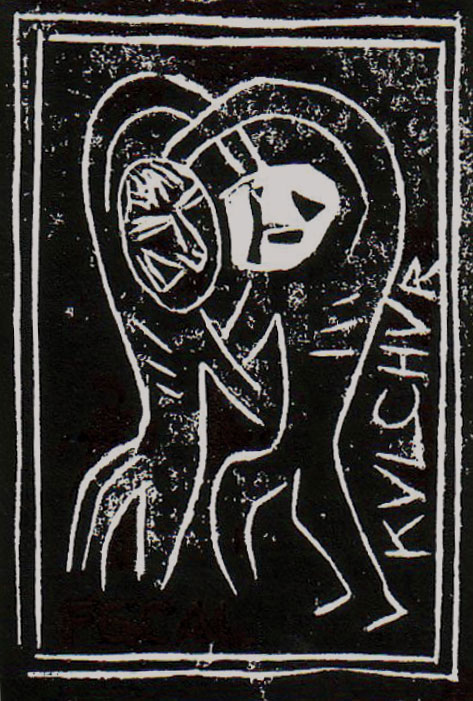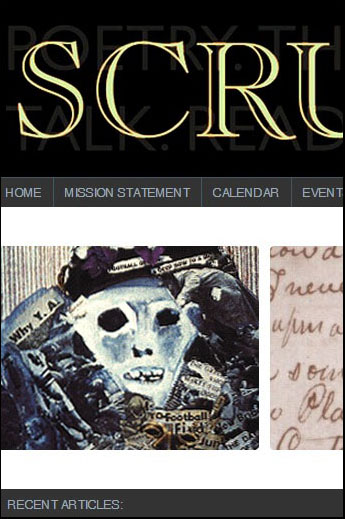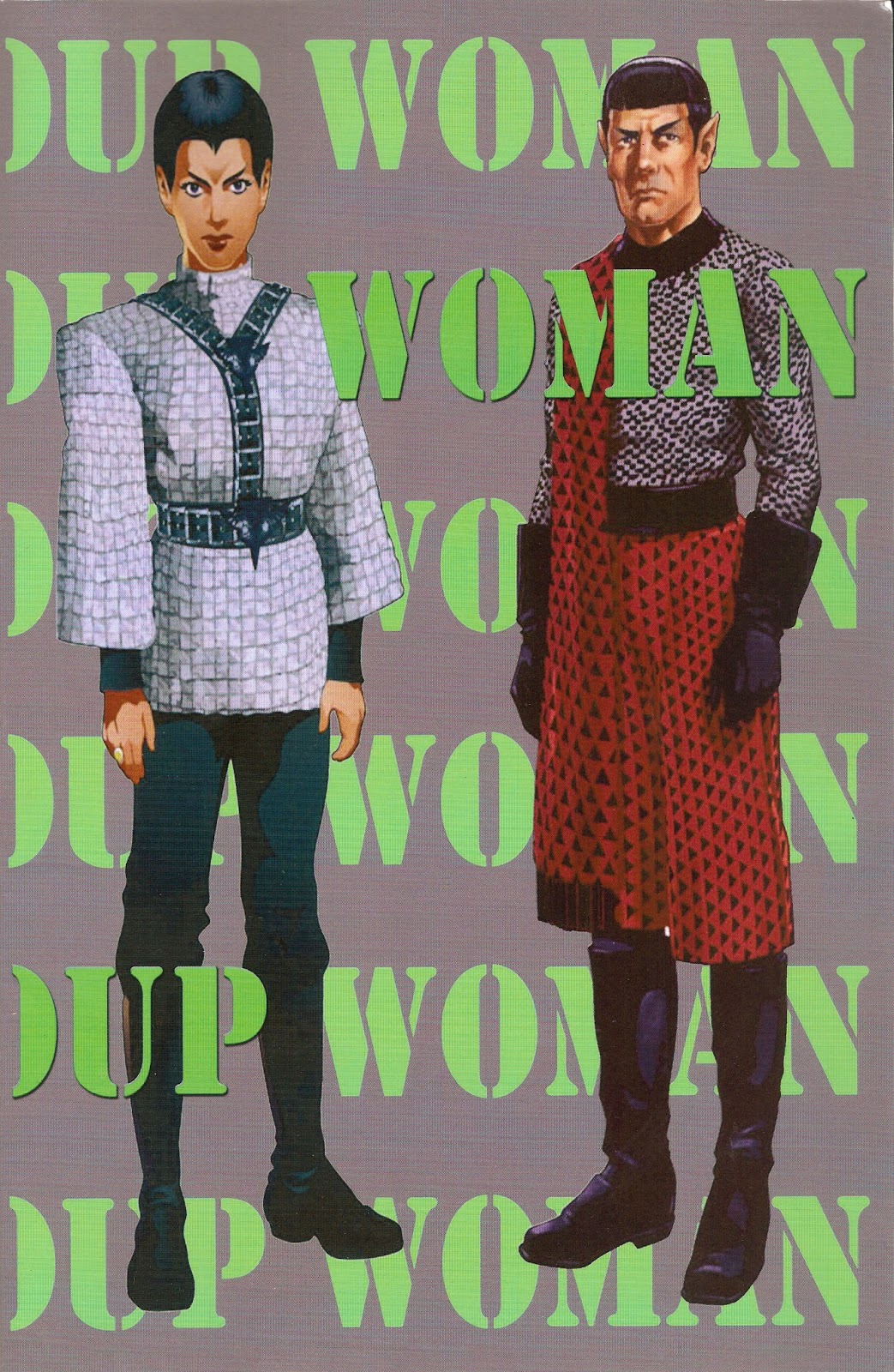CARLA HARRYMAN : OPEN BOX
 To the left is an image by Elizabeth Jameson which, the colophon of Carla Harryman's Open Box tells us, was made in conversation with Harryman. While this image appears on the rear cover of Open Box, and another appears on the front cover, there are also two images by Jameson inside the book—one which we find on the recto of the page immediately before the first poem and one on the recto of the page immediately after the last poem. Here the very poems collected in Open Box are themselves boxed in. As Harryman informs us, within the fact (or flesh) of the book, the poem resides as skeletal frame: "The poem becomes a little/ Am I/ An emotion/ Skeleton"— though perhaps this "Skeleton" is not the poem but rather the "I" which wonders whether or not it is something, a being, reducible to "emotion", a "Skeleton", something which is not being as such but the shadow of being, the shell of a prior subject position.
To the left is an image by Elizabeth Jameson which, the colophon of Carla Harryman's Open Box tells us, was made in conversation with Harryman. While this image appears on the rear cover of Open Box, and another appears on the front cover, there are also two images by Jameson inside the book—one which we find on the recto of the page immediately before the first poem and one on the recto of the page immediately after the last poem. Here the very poems collected in Open Box are themselves boxed in. As Harryman informs us, within the fact (or flesh) of the book, the poem resides as skeletal frame: "The poem becomes a little/ Am I/ An emotion/ Skeleton"— though perhaps this "Skeleton" is not the poem but rather the "I" which wonders whether or not it is something, a being, reducible to "emotion", a "Skeleton", something which is not being as such but the shadow of being, the shell of a prior subject position.As with the work of Tom Raworth, it is hard to read any one line of verse here in relation to any other. Do we attach a given line to the line preceding it or the one following? And it is precisely the construction of such disjunction and dislocation within the body (box) of the poem which suggests that the poems we encounter in this collection are open, their contents strewn across the floor, no longer bound to the logic of form or normative syntactic and sentence structures. Each line dangles between others and, given the use of negative space on the page, they dangle in what appears to be a curious isolation, as though each were, on some level, a poem unto itself. The longer lines have a lyric quality, but it is the wonderfully disjunctive juxtaposition of each line to surrounding lines which subverts the lyricism of the work. And here, peering into the open box, we scream or encounter the screams of others:
_____________________________________
Dangling in box
A tiny screw
Attached to a scream
Switched to arm
Belladonna Books. 2007. Available through SPD.






<< Home